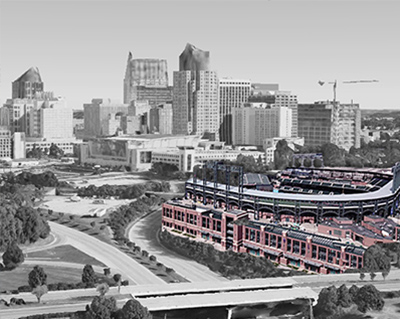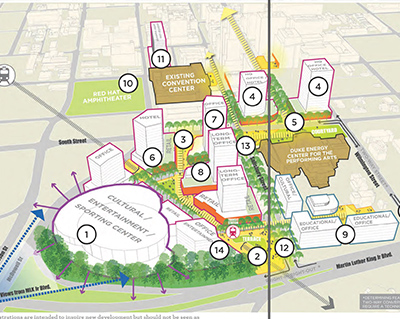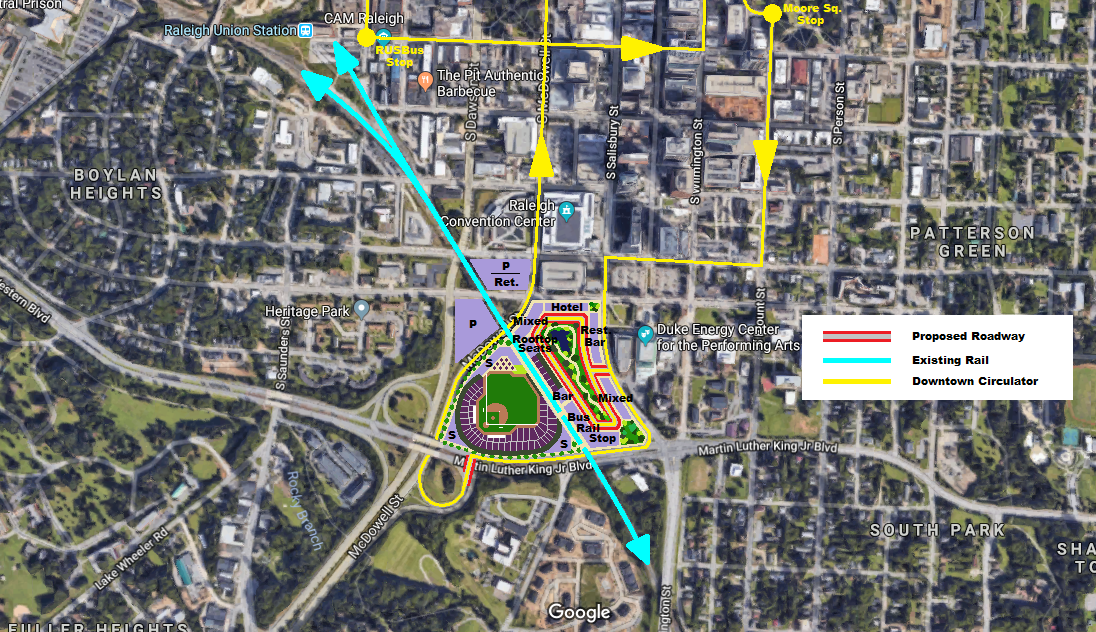

Downtown Raleigh’s Gateway Center is the patch of land bounded by Martin Luther King Jr. Boulevard to the south, McDowell Street to the west, South Street to the north, and Salisbury Street to the east. It is also bisected by a line of Norfolk Southern railroad tracks.
In Raleigh’s most recent 10-year plan (adopted by the city), this plot of land had two options. One of those options included a stadium or sports complex.
One of the main hurdles in building a stadium here would be the rail line that runs through the property, however, this challenge could be turned into an opportunity if the rail-line was integrated into the new district’s design.
